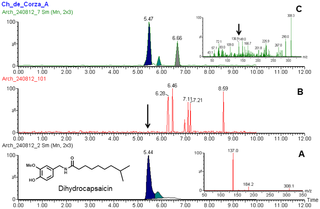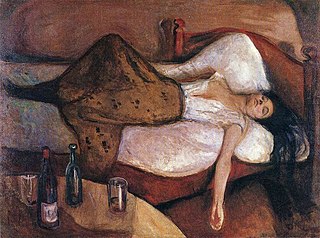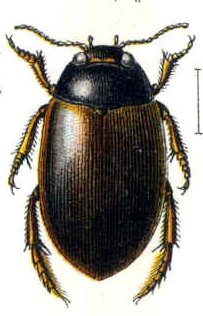
Dihydrocapsaicin is a capsaicinoid and analog and congener of capsaicin in chili peppers (Capsicum). Like capsaicin, it is an irritant. It accounts for about 22% of the total capsaicinoid mixture and has the same pungency as capsaicin. Pure dihydrocapsaicin is a lipophilic colorless odorless crystalline to waxy compound. It is soluble in dimethyl sulfoxide and 100% ethanol.
Homodihydrocapsaicin is a capsaicinoid and analog and congener of capsaicin in chili peppers (Capsicum). Like capsaicin it is an irritant. Homodihydrocapsaicin accounts for about 1% of the total capsaicinoids mixture and has about half the pungency of capsaicin. Pure homodihydrocapsaicin is a lipophilic colorless odorless crystalline to waxy compound. It produces "numbing burn" in the throat and is one of the most prolonged and difficult to rinse out. On the Scoville scale it has 8,600,000 SHU.

18-Methoxycoronaridine is a derivative of ibogaine invented in 1996 by the research team around the pharmacologist Stanley D. Glick from the Albany Medical College and the chemists Upul K. Bandarage and Martin E. Kuehne from the University of Vermont. In animal studies it has proved to be effective at reducing self-administration of morphine, cocaine, methamphetamine, nicotine and sucrose. It has also been shown to produce anorectic effects in obese rats, most likely due to the same actions on the reward system which underlie its anti-addictive effects against drug addiction.
Level Vodka, a brand of vodka from the makers of Absolut was launched in 2004. Made in Åhus, Sweden, the vodka is made from winter wheat and is marketed as "perfectly balanced" due to the use of two distinct distillation methods - a continuous distillation process to remove congeners, creating the vodka's smoothness, and a batch distillation process to add character.
Decamethonium (Syncurine) is a depolarizing muscle relaxant or neuromuscular blocking agent, and is used in anesthesia to induce paralysis.

This is a complete list of polychlorinated biphenyl (PCB) congeners.

A hangover is the experience of various unpleasant physiological and psychological effects usually following the consumption of alcohol, such as wine, beer, and liquor. Hangovers can last for several hours or for more than 24 hours. Typical symptoms of a hangover may include headache, drowsiness, concentration problems, dry mouth, dizziness, fatigue, gastrointestinal distress, absence of hunger, light sensitivity, depression, sweating, nausea, hyper-excitability, irritability, and anxiety.

Agabus congener is a species of predatory beetle native to the Palearctic and the Near East. In Europe, it is only found in Andorra, Austria, Belarus, Belgium, Great Britain including Shetland, Orkney, Hebrides and Isle of Man, Bulgaria, Croatia, the Czech Republic, mainland Denmark, Estonia, Finland, mainland France, Germany, mainland Greece, the Republic of Ireland, mainland Italy, Kaliningrad, Latvia, Lithuania, Northern Ireland, North Macedonia, mainland Norway, Poland, Russia, Sardinia, Slovakia, mainland Spain, Sweden, Switzerland, the Netherlands and Ukraine.

Coronaridine, also known as 18-carbomethoxyibogamine, is an alkaloid found in Tabernanthe iboga and related species, including Tabernaemontana divaricata for which it was named.

Ibogamine is an anti-convulsant, anti-addictive, CNS stimulant alkaloid found in Tabernanthe iboga and Crepe Jasmine. Basic research related to how addiction affects the brain has used this chemical.

(–)-2-Methoxyethyl-18-methoxycoronaridinate (ME-18-MC) is a second generation synthetic derivative of ibogaine developed by the research team led by the pharmacologist Stanley D. Glick from the Albany Medical College and the chemist Martin E. Kuehne from the University of Vermont. In animal studies it has shown similar efficacy to the related compound 18-methoxycoronaridine (18-MC) at reducing self-administration of morphine and methamphetamine but with higher potency by weight, showing anti-addictive effects at the equivalent of half the minimum effective dose of 18-MC. Similarly to 18-MC itself, ME-18-MC acts primarily as a selective α3β4 nicotinic acetylcholine antagonist, although it has a slightly stronger effect than 18-MC as an NMDA antagonist, and its effects on opioid receptors are weaker than those of 18-MC at all except the kappa opioid receptor, at which it has slightly higher affinity than 18-MC.

(–)-18-Methylaminocoronaridine (18-MAC) is a second generation synthetic derivative of ibogaine developed by the research team led by the pharmacologist Stanley D. Glick from the Albany Medical College and the chemist Martin E. Kuehne from the University of Vermont.
In the alcoholic beverages industry, congeners are substances, other than the desired type of alcohol, ethanol, produced during fermentation. These substances include small amounts of chemicals such as methanol and other alcohols, acetone, acetaldehyde, esters, tannins, and aldehydes. Congeners are responsible for most of the taste and aroma of distilled alcoholic beverages, and contribute to the taste of non-distilled drinks. It has been suggested that these substances contribute to the symptoms of a hangover. Brandy, rum and red wine have the highest amount of congeners, while vodka and beer have the least.

In chemistry, congeners are chemical substances "related to each other by origin, structure, or function".
Alcohol congener analysis of blood and urine is used to provide an indication of the type of alcoholic beverage consumed. The analysis involves investigating compounds called congeners that give the beverage a distinctive appearance, aroma, and flavour, not including water and ethanol. The theory of discovering one's drinking habits has been investigated since the late 1970s, predominantly in Germany, for "hip-flask" defence cases (after-drinking). Alcohol congener analysis can play a crucial role in these cases where the driver is apprehended some time after a motor vehicle incident who, when returning a positive alcohol reading then claim that this is due to drinking an alcoholic beverage only after the incident. This traditional methodology for congener analysis has focused solely on the detection of fermentation by-product congeners that are found in all alcoholic beverages. By comparing the ratios of a set standard of congeners, the ingested alcoholic beverage type is proposed.

Potamarcha congener is a species of dragonfly in the family Libellulidae. It was first described by Jules Pierre Rambur in 1842, almost fifty years before Friedrich Karsch described its genus. Potamarcha congener is one of two species making up the genus Potamarcha, together with Potamarcha puella.

Estrapronicate (INN), also known as estradiol nicotinate propionate is an estrogen medication and estrogen ester which was never marketed. It was studied as a component of the experimental tristeroid combination drug Trophobolene, which contained nandrolone decanoate, estrapronicate, and hydroxyprogesterone heptanoate.
Arthroplea bipunctata is a species of flatheaded mayfly in the family Arthropleidae. It is found in North America.
Arthroplea is a genus of flatheaded mayflies in the family Arthropleidae. There are at least two described species in Arthroplea.











